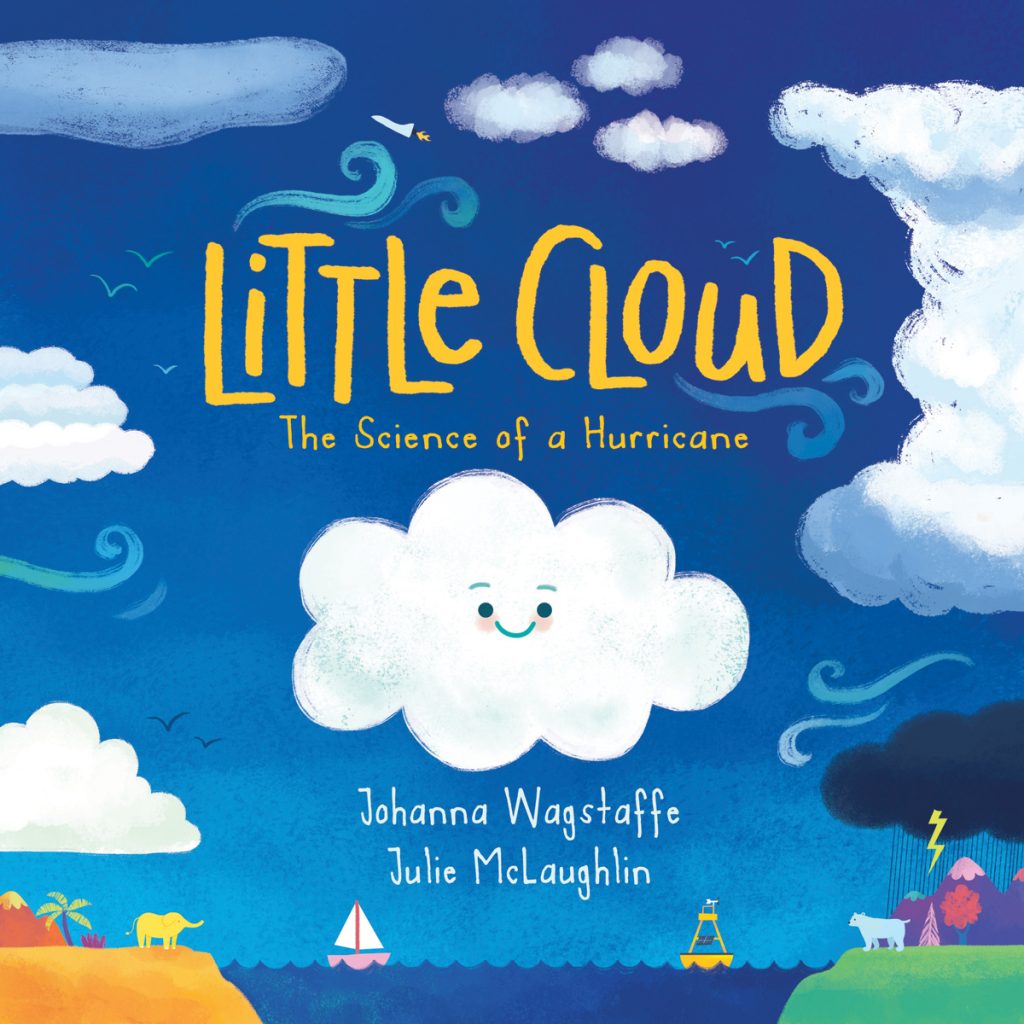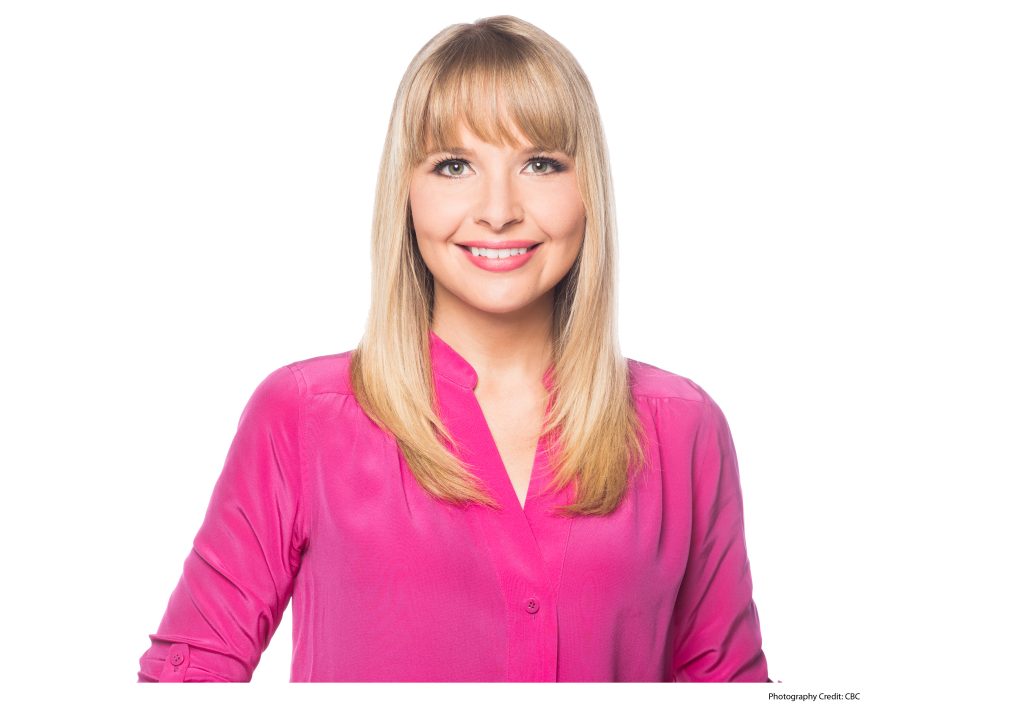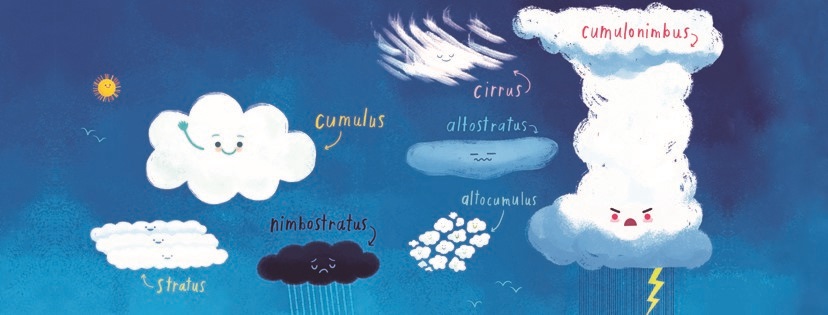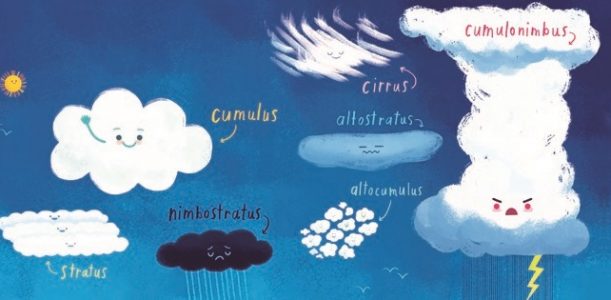
Illustrations by Julie McLaughlin.
In Johanna Wagstaffe’s Little Cloud, readers follow a cumulus cloud on an adventure through the sky and learn the science behind how it transforms into a hurricane. Beautifully detailed illustrations integrate science with storytelling, and children will enjoy finding new gems of information with every read. This is a comprehensive narrative about a powerful weather system that’s so compelling readers won’t even realize they are becoming budding meteorologists.
Happy Spring, Orca Blog readers! As the seasons change, so does the weather. In this guest post, CBC meteorologist Johanna Wagstaffe shares what it’s like writing about science for kids, and how to talk to them about scary topics like natural disasters.
* * *
As a meteorologist in the broadcasting industry for almost 15 years now, I have spent a lot of time thinking about science communication. Relaying what I find so interesting about the earth’s natural processes to a general audience is why I got into this field in the first place. One of my favorite aspects of my job, though, is getting to talk to young people.
From “weather school” in kindergarten, to preparing for an earthquake with middle-school students, to talking about climate change leadership with high schoolers—I have found that children and young adults are the most engaging. But also the most challenging! When talking to a very young audience, especially about natural disasters, I think it’s important to strike a balance between fact and storytelling. Asking kids about their own experiences with the topic is usually how I like to kick off a discussion, even if that involves a lot of imagination. For the really young students, everyone seems to have a grandma who was in a tornado or a brother who is a tornado! This seems to loosen up the room, get everyone laughing and get the brains working. Turning science into storytelling can be so powerful—like anthropomorphizing a cloud for first readers or finding stories of children that have been affected by a natural disaster for older grades.

When we do start talking about the impact that severe weather can have on people’s lives, this is when I find the focus can turn to being prepared, not scared. And this goes for weather disasters as well as earthquakes and climate change. Talking to young people about how to prepare themselves and their families for disasters means they can take control of the situation rather than be scared about it.
Interactive projects, like coming up with a class disaster kit and disaster plan, can work for real-life scenarios, and they get everyone involved. And I truly believe that kids going home to their own families, helping to implement this kind of preparedness in their own home, will help our communities be better prepared in general.
Finding a way to talk about the advances in forecasting and technology can also help with easing fears. Hopefully, we may even inspire future scientists!
And lastly it’s important to talk about children in other parts of the world who don’t have the same kinds of infrastructure and preparedness that we do. Finding stories from other children around the world really helps to bring home the fact that, while an extreme weather event that hit us might be an inconvenience, the same storm or earthquake could mean life or death for someone in a developing country. These kinds of discussions are also a great way to stay up to date with current events. Talking about natural disasters that are being shown in the news helps children relate to those events, find out ways to help, and stay compassionate and curious.
Don’t be afraid to reach out to actual scientists either! Pro tip: Twitter seems to be the platform that scientists use the most these days to communicate the work they are doing in a particular field and to share up-to-date information during an extreme event. It never hurts to reach out and ask if someone is available to Skype into a classroom. That’s often how I end up in one!

Johanna Wagstaffe is the meteorologist and science host for CBC Vancouver and CBC News Network. With a background in seismology, geophysics and earth science, Johanna has covered a wide range of science stories, from the 2016 Fort McMurray wildfire and the 2011 Japan earthquake and tsunami to the Paris Climate Change Conference. She has also written Fault Lines, a children’s book about the science behind earthquakes. She lives in Vancouver.


